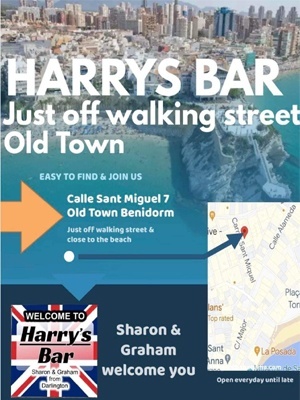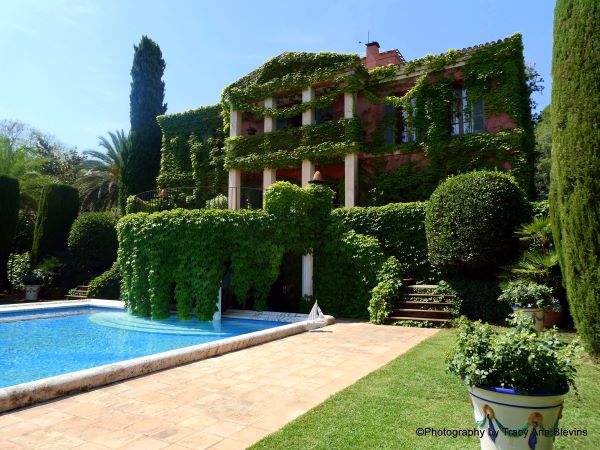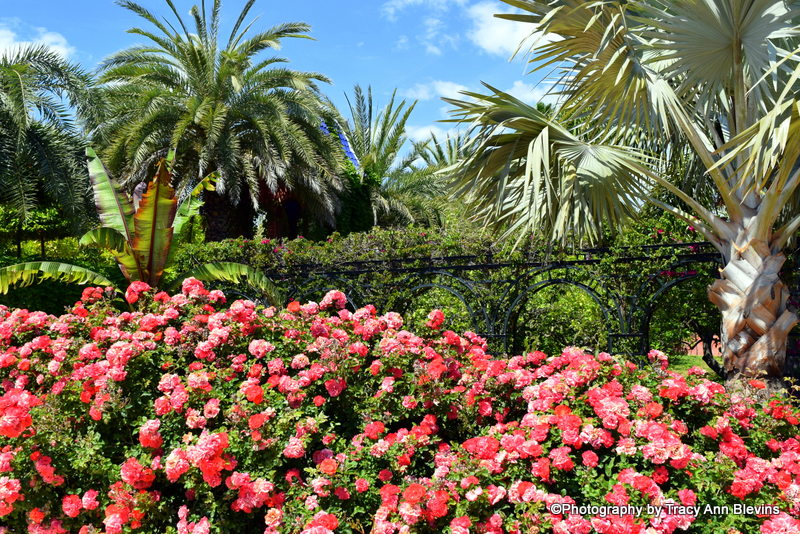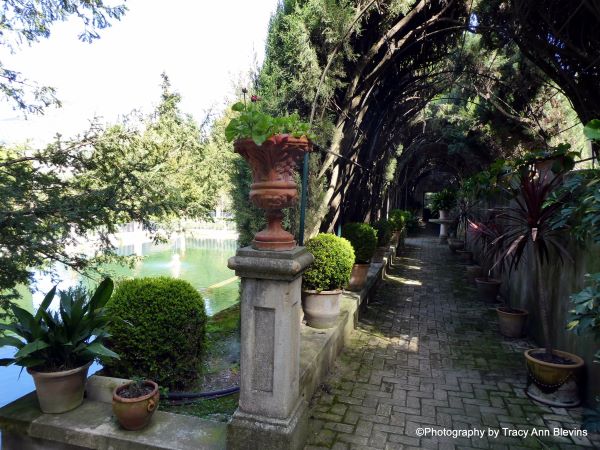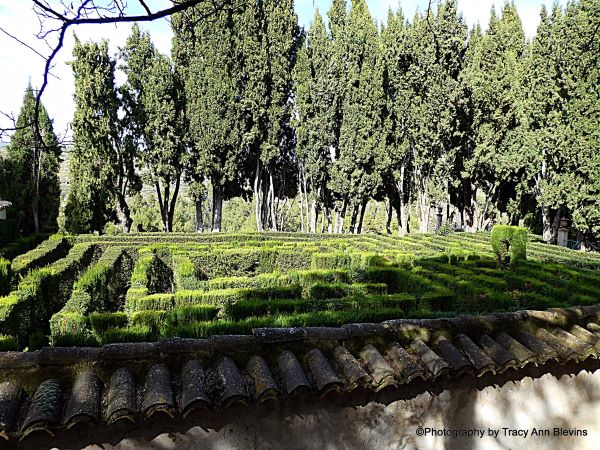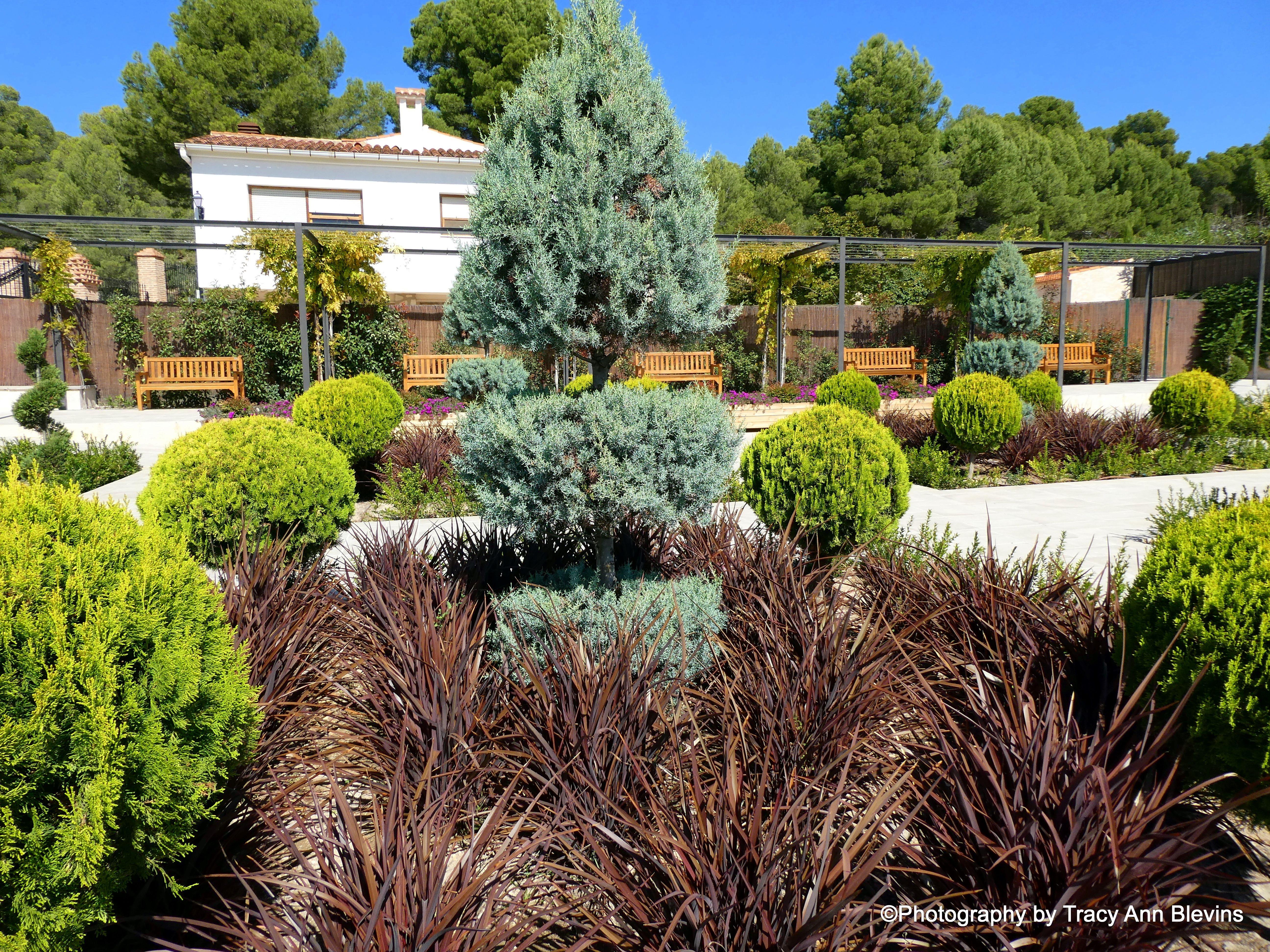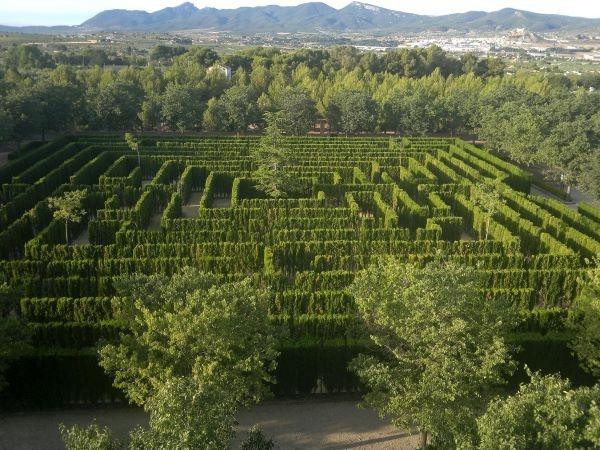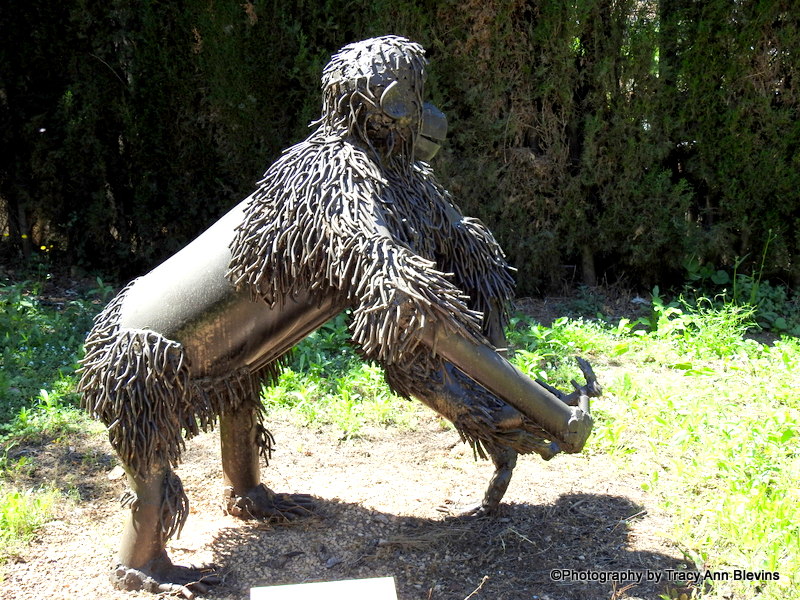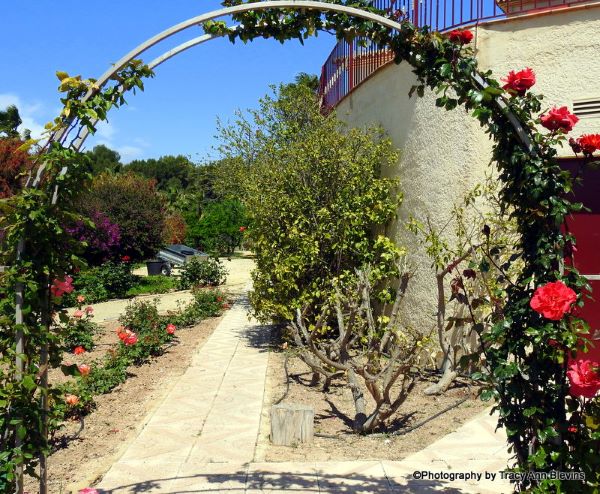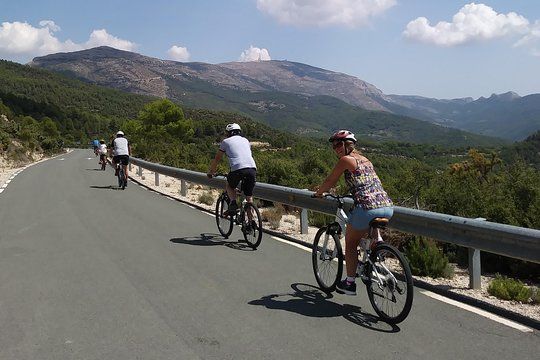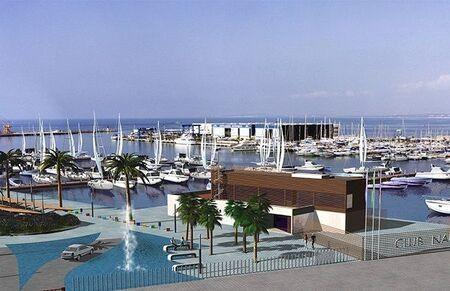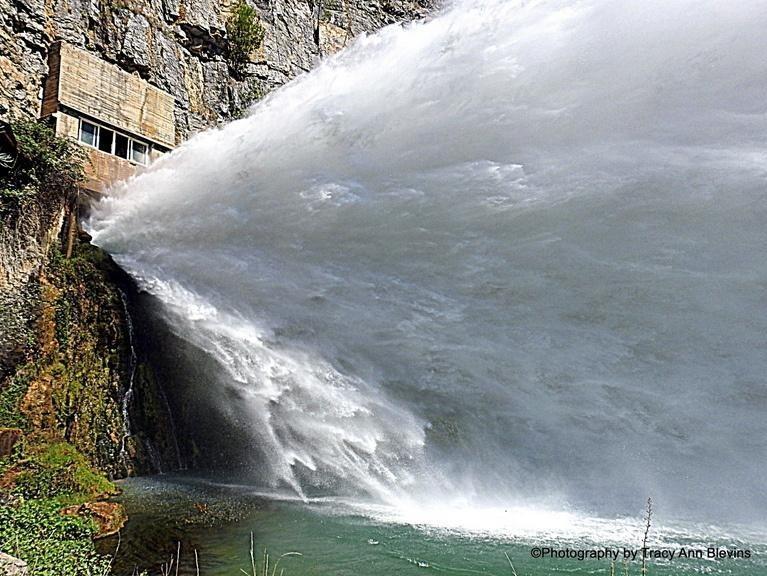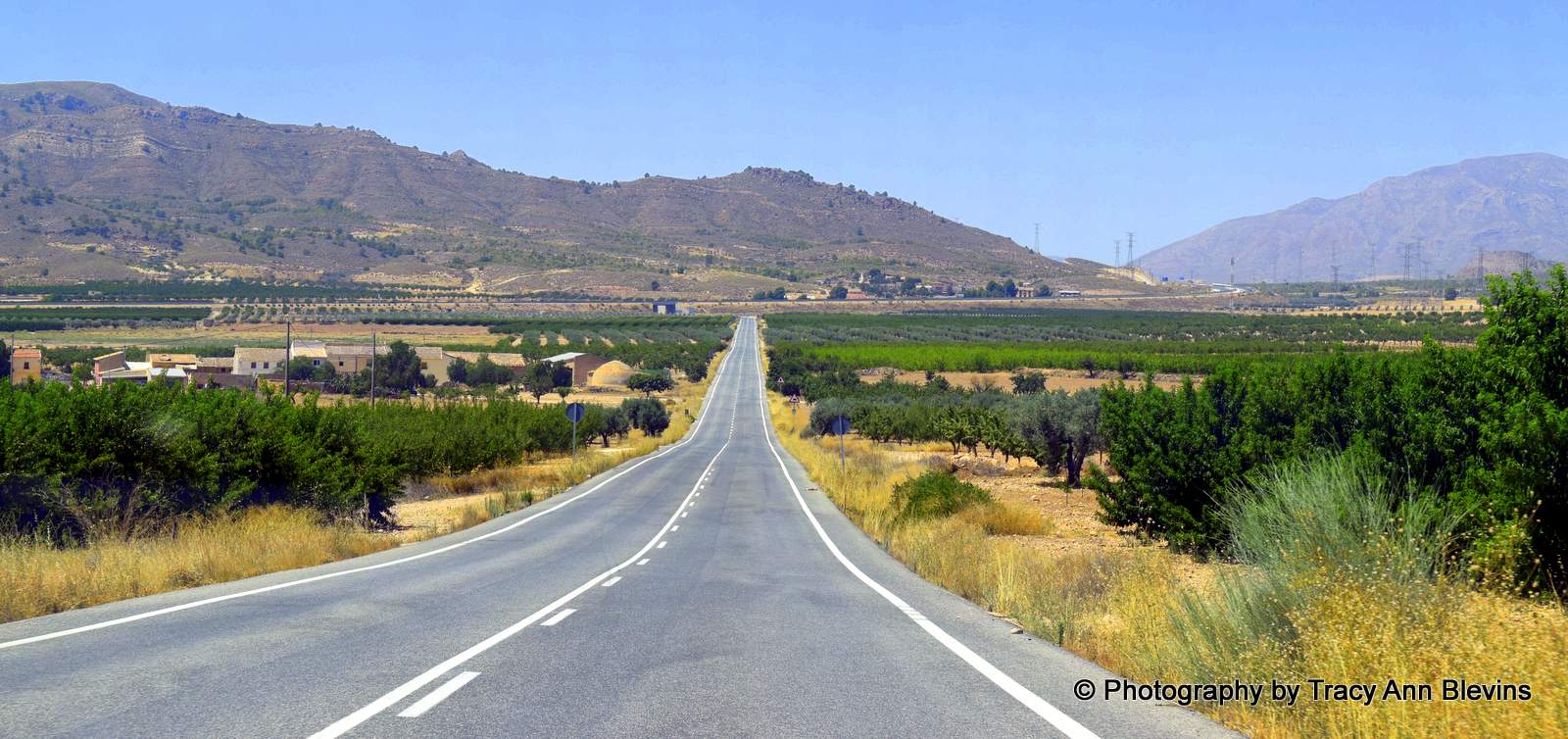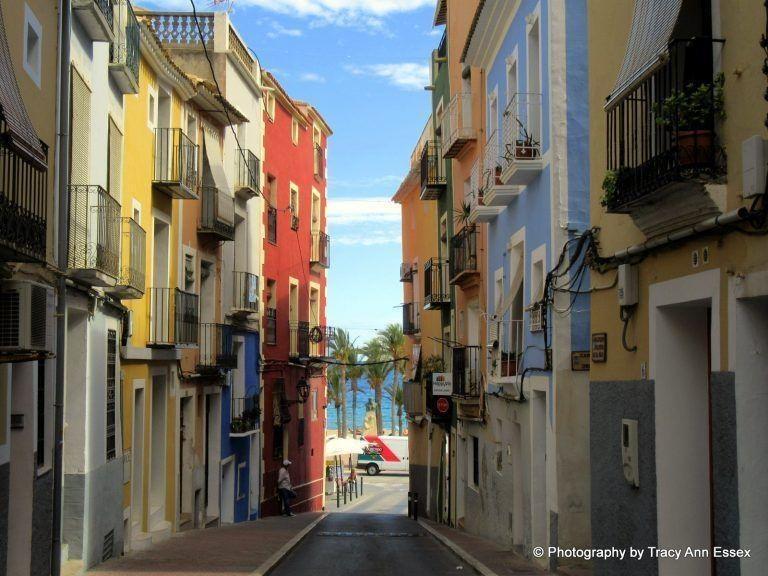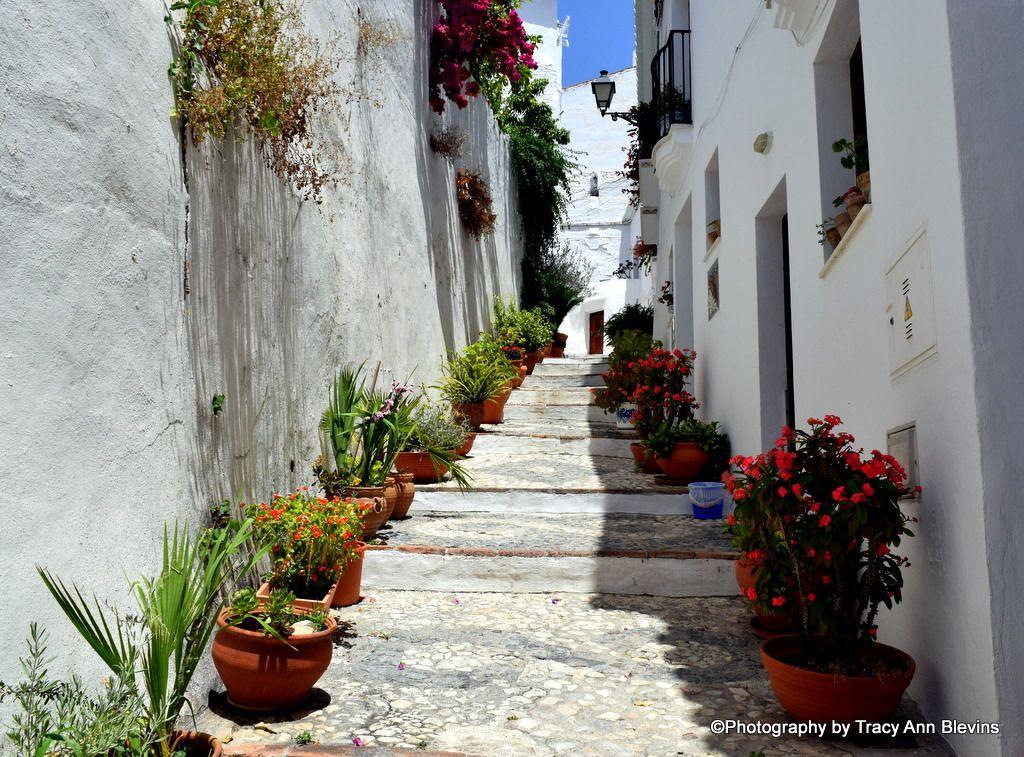
All about OLIVA - Oliva is a wonderful small, friendly town on the Costa Blanca with beautiful white-sandy beaches, mountain landscapes and charming historic centre, explore this lovely corner of the Region of Valencia.
Oliva is a municipality in the Valencian Community, it is located in the southeast of the province of Valencia , in the Safor region, bordering the province of Alicante.
Situated just 62km. from Benidorm. The best way to get from Benidorm to Oliva is obviously by car but there is a bus which takes around 3hrs and costs €8 - €12.
Oliva is divided into 3 areas, The mountains, the highest: Pla del Frares 464 m and Covatelles 365 m these are classified as a protected natural public park, Tossal Gros 293 m, Cavall Bernat 206 m and Penya de l'Àguila 170 m.
The other area of mountains are, Pla de Carrixar 249 m which at its summit has a depression that stores rainwater and on its banks plants belonging to humid areas grow such as the Carrizo Phragmites australis (hence its name Carrixar). Lloma d'Enmig 238 m, Penyalba 154 m.
The second area is the central area, between the mountains and the coast, where you will find swampy areas and marshes.
The third area is the coast, which extends for 8.8 km, with fine sandy beaches along its entire length, except at the southernmost end, where the province of Alicante begins. Part of its municipal area is integrated into the Marjal de Pego-Oliva natural park.
Things to do in Oliva
Discover the historical heritage of Oliva
Walk through streets full of mansions with rustic and elegant architecture and remains of the imposing palace of Messrs. Centelles and Riu Sech.
Walk through Vila Condal which will end in the remains of the Towers and Wal, which today is integrated into the urban fabric.
Wander through the old Moorish Raval with its narrow streets, such as La Hoz, walk to the Gerreria and Pinet area!

Head to the Tosalet del Doiz, a viewpoint where you can enjoy panoramic views.
In Oliva you will find temples of all kinds, from the Parish Church of San Roque, with a magnificent baroque chapel, to the Parish Church of the Assumption of Our Lady, which has a crypt converted into an exhibition space .

Visit the Hermitage of San Vicente Ferrer, from the 18th century and located in a place from which the saint is said to have preached, and the building known as L'Enginy, an old sugar mill.
Museu Arqueológic d'Oliva
The Archaeological Museum of Oliva is housed in a stately building originating from the 15th century, so its location alone is worth the visit. The history of Oliva and Safor is covered and everyday pieces and tools from different eras and cultures such as the Iberian or Roman, Middle Ages and the Islamic period.

Opening hours October 1st to May 31st - Tuesday to Saturday from 10:00 a.m. to 1:30 p.m. and from 4:00 p.m. to 7:00 p.m.Sunday from 11:00 a.m. to 1:30 p.m.
June 1st to September 30th -Tuesday to Saturday from 10:00 a.m. to 1:30 p.m. and from 5:00 p.m. to 8:00 p.m. Sunday from 11:00 a.m. to 1:30 p.m..
Leaving the town center of Oliva visit the Hermitage of Saints Antonio and San Pedro Apóstol, simple and charming.
Santa Ana Castle from here you can enjoy spectacular views, an Islamic fortress from the 12th century that served to reinforce coastal surveillance against attacks by Barbary pirates. Although only a couple of walls remain standing, the original floor plan of the construction and the towers can be seen. In 2002 it was declared an Asset of Cultural Interest.
Access is through stairs, once there, you can enjoy views of Oliva from above, seeing its entire urban layout with its buildings of incalculable value such as the churches of Santa María and San Roque with their characteristic blue domes.

For lovers of nature there is much to do in Oliva, visit the Marjal de Pego y Oliva Natural Park and admiring the landscapes created by the springs or “ullals” of clean waters, full of fauna, and perfect for a birdwatching.
Oliva beaches
Oliva is a great place to fall in love with the Mediterranean! with nearly 9km of fine sandy beaches.
Terranova-Burguera - Location: from the Piles terminus to the Club Náutico breakwater.
From Terranova you can walk along the shore from the port of Oliva to the port of Gandía.

On this beach you can find a freshwater spring called El Tou or El Clotal.
This fine sandy beach has received the blue flag of the European Community on several occasions.
Pau-Pi - Location: from the Club Náutico breakwater to the mouth of the Séquia Mare.
The most popular beach in Oliva, with a length of 1,400 meters and a width of 70 meters. The sand on Pau Pi beach in Oliva is fine and golden, and is delimited by the breakwater of the Oliva Nautical Club and the mouth of the Séquia Mare. This beach has the highest quality certificates: the Blue Flag, the Q for Quality, the Q for Qualitur and the ISO 14001.

You will find all the services you need here in high season such as a recreational play area for children and infrastructure for people with reduced mobility, showers, footbaths, toilets and a parking area, it also has a pedestrian area along Avenida del Mar, where you will find restaurants, ice cream parlours.
Aigua Blanca - A quiet beach, situated next to the mouth of the Bullent River. It is a naturist beach with pleasant, fine-grained, golden sand, with a promenade a good number of services, such as Beach bars and restaurants, and in summer kiosks are installed very close to the sea.

Rabdells - A quiet beach with fine sand and surrounded by dunes, 1 km long and 80 meters wide, beach bars are open in high season. Near the area there are campsites with direct access to the beach.
Aigua Morta - Located south of the municipality of Oliva, between the Vedat river and the San Fernando urbanization, this is a little urban beach that has a length of 2,200 meters and has fine golden sand. In the summer months this is one of the most visited beaches in the town.
Les Deveses - Located at the southern end of the municipality, where it borders Dénia.
A quiet beach 700 meters long and 100 meters wide, covered with extraordinary fine golden sand. Les Deveses has easy access on foot and by car, if you come by car, keep in mind that this beach does not have a specific parking area.
Marjal de Pego-Oliva Natural Park - This is a beautiful natural park and wetland where you can enjoy walks, take bike rides, do some birdwatching and enjoy spectacular views.
Marjal de Pego-Oliva is also an agricultural landscape, as many years of rice cultivation has shaped the appearance of the wetland.
The park comprises of a combination of wetlands and dunar systems and sits to the south of the river Serpis, a wind variety of animals call this park home, making it one of the most important areas in the Mediterranean basin.

The waters of the river Bullent-Vedat and the river Racons-Molinell and the Mostalla and Segària aquifers keep this unique system of underground springs – known as ullals – bubbling with fresh and clean water. The beautiful waters are bursting with plants such as water lilies, yellow iris, rushes and duckweed and home to invertebrates like prawns and clams as well as many fish species, such as Valencia toothcarp, amphibians, reptiles and even turtles such as the Spanish pond turtle. You could even see water snakes.
One of the greatest attractions of the park is the birdlife, which attracts birdwatchers from all four corners of the world. Here you will see a great variety of species, namely heron, black-winged stilt, coot, little grebe, moorhen and countless species of ducks, to name but a few.
The natural park is criss-crossed with a network of trails, making it a lovely place to take a stroll or even do some horse riding.
Font Salada, situated in the natural park, this is a thermal spring whose crystalline waters range between 21°c and 23°c: the perfect temperature to take a dip all year round.
Salada means 'salty' the waters are salty and boast a number of minerals that are said to have healing properties for the skin.

The closest bus station to Font Salada is C. Guillem De Castro 21 (Creu Roja, Parking Mercadona) Ida [Oliva] is 73 meters away, 1 min walk.

All about Rojales - Rojales situated in the La Vega Baja region 102 km from Benidorm, epitomizes the essence of a quintessential Spanish agricultural village, boasting the scenic River Segura meandering through its heart and showcasing traditional cave dwellings that encapsulate the rich history of the region.
Nestled inland from the sun-kissed coastal stretch of Guardamar del Segura, on the southern Costa Blanca, Rojales enjoys a prime location that seamlessly blends the allure of rural tranquility with proximity to the vibrant coastal atmosphere.
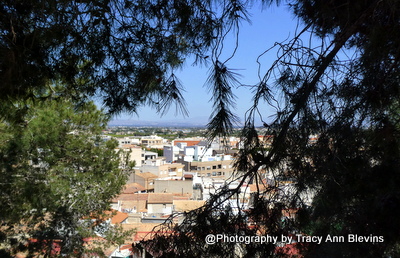
Rojales extends beyond its quaint town center, encompassing several sought-after residential developments which are popular areas for many ex-pats.
Shopping & Dining: At the heart of Rojales, a vibrant array of shops awaits, boasting several top-notch supermarkets alongside an eclectic selection of restaurants, tapas bars, cozy cafes, and inviting pubs, including authentic English and Irish establishments. For added convenience, several banks are also conveniently situated within the town center.
Market: Experience the vibrant energy of Rojales on Thursday mornings as the weekly market springs to life beside the river in the town center. Locals and visitors alike flock to for fresh produce and seek out irresistible bargains amidst the bustling atmosphere.
Nightlife: Unleash your inner party spirit on the lively strip of discos nestled in Rojales, particularly near the Los Palacios area. Join the locals in letting loose on Friday, Saturday, and Sunday nights, reveling in the vibrant nightlife that extends into the early hours.
Leisure: The River Segura winds through Rojales, offering a perfect setting for leisurely evenings spent mingling with locals who relish the warmth of summer nights outdoors.
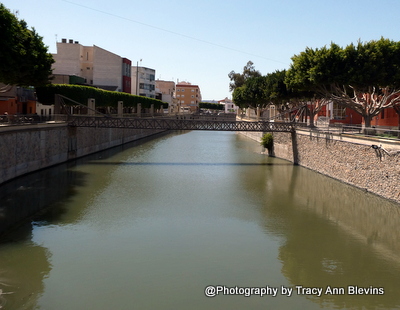
Festivals: Another great reason to visit it, such as the interesting Festival of Nations, the San Isidro Pilgrimage or those of Nuestra Señora del Rosario. And they represent a good opportunity to try some local dishes such as arroz cocido con bolitas or sweets such as almojábenas or toñas.
Places to visit whilst in Rojales
Municipal Archaeological-Paleontological Museum: This museum is located in the old Town Hall, C / Plaza de España, 1.
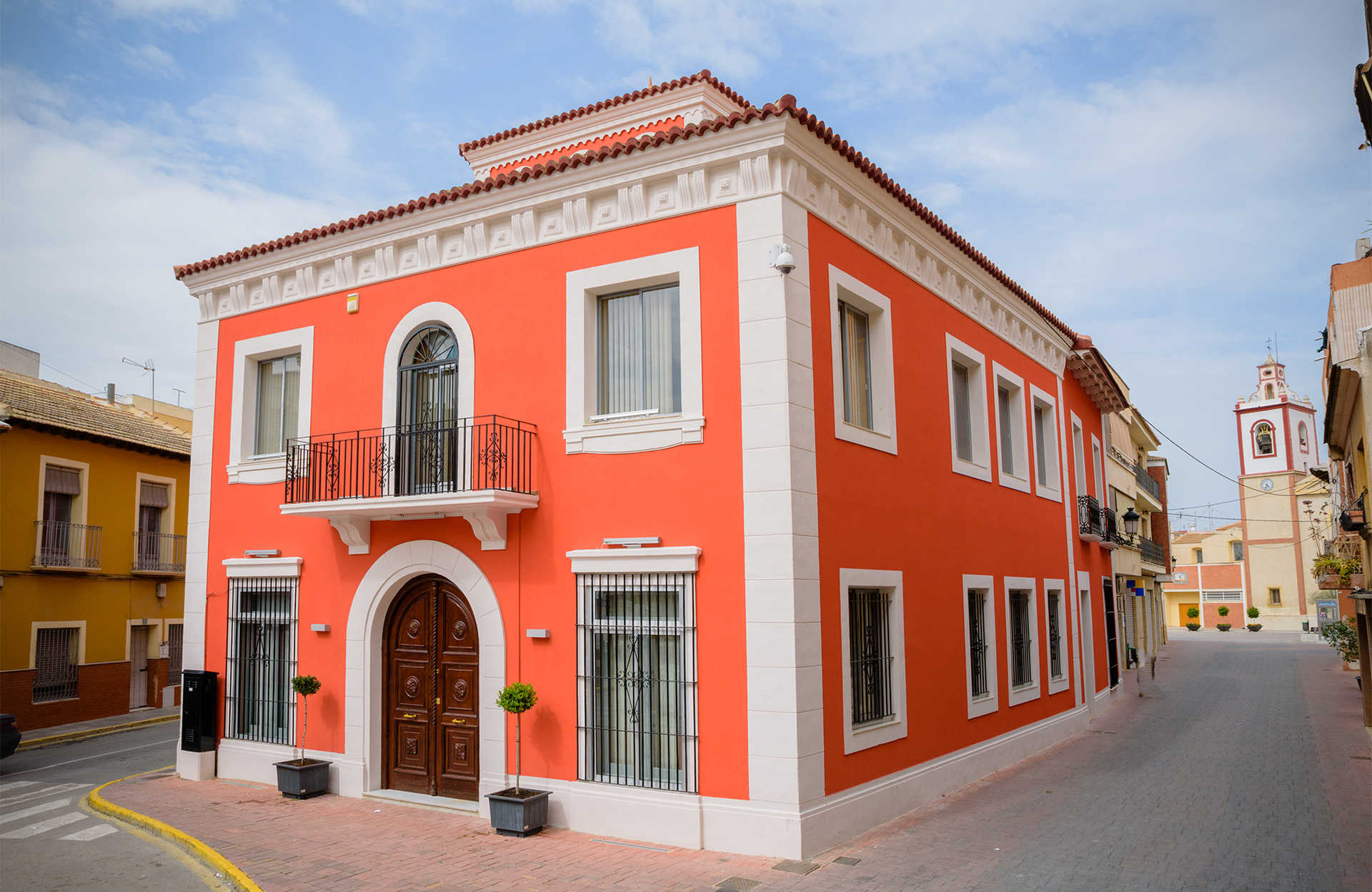
It is a journey through time through the interior of Alicante with which adults and children will be able to learn about the evolution of the territory and the population of Rojales.
The museum is divided into two large areas, Paleontological, where you can find some of the vestiges that appeared in almost twenty small sites and fossils of marine mammals. and the Archaeological zone, where the cultural development of Rojales can be seen.
Opening Hours - Monday to Friday 09:00 to 15.00
All about Rojales
Rojales Bridge, Water wheel and Dam: - This set of bridge, water wheel and dam, along the banks of the Segura River, were built in different periods. The oldest of these elements is the weir or dam, from the 17th century. The bridge is from the 18th century and the wheel was finally installed in the 19th century.
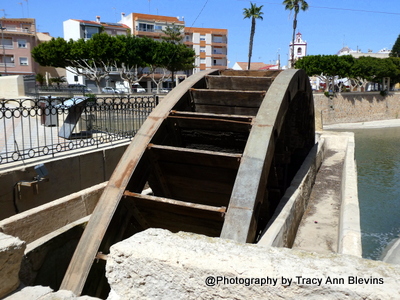
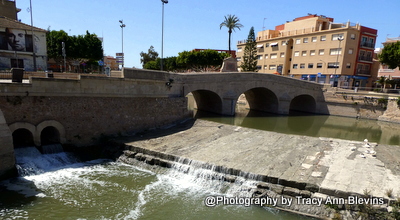
They are relatively close to the center of the town and they have very specific functions, linked to the spectacular orchard that surrounds this place. In the case of the dam or weir, located downstream after the Charles III Bridge, its function was to regulate and direct the water through the waterwheel. The bridge connects two areas of Rojales separated by the river, which suffered from frequent and dangerous floods in the past.
All about Rojales Shell House, La Casa de las Conchas: Prepare to be mesmerized by the sheer splendour of this one-of-a-kind attraction, boasting an impressive display of over 700,000 shells adorning its walls.
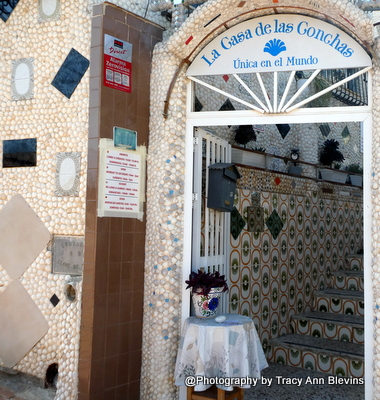

For nearly two decades, owner Manuel meticulously gathered shells from the pristine beaches of the Costa Blanca, adorning not only the façade of his home but also crafting sculptures and decorative artifacts to adorn every corner.
Today, the house is under the care of Manuel's son, José Manuel, who graciously welcomes visitors to experience this amazing masterpiece first-hand.
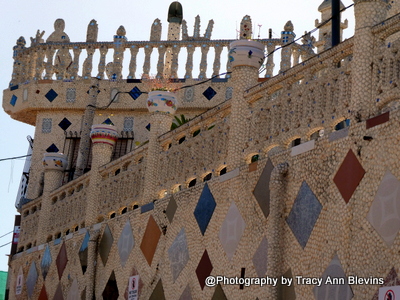 x
x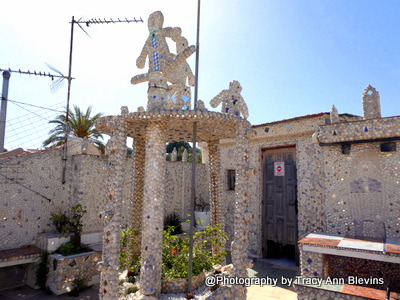
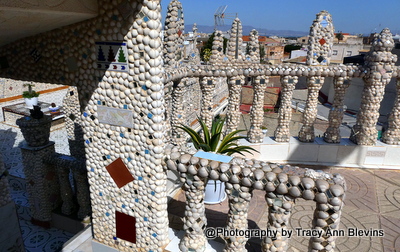
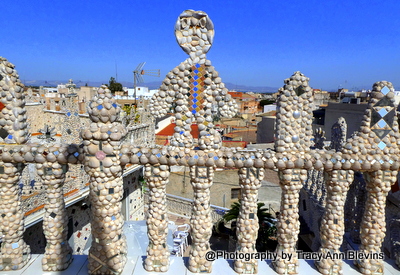
Open daily from 10:00 to 15:00, admission to the Shell House is priced at 5€ per person, parking is available along Carrer Vilatona, 03170 Rojales, Alicante.
Rodeo Caves: These hold a rich history dating back to the 18th century when they were excavated by Murcian miners drawn to Rojales for agricultural opportunities. Over the years, these caves served as dwellings for generations of locals until the early 20th century. Today, they stand as a testament to Rojales' heritage, offering visitors a captivating glimpse into the past.
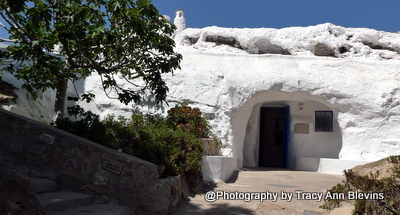
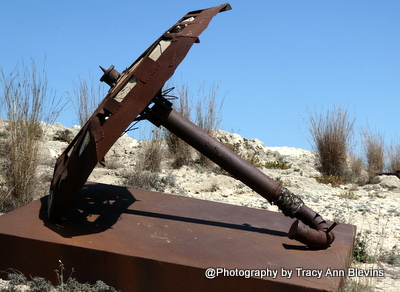
Transformed into captivating studios and workshops by talented local artisans, the caves are open for exploration, free of charge, every Monday to Friday from 10:00 to 15:00. Location Cuevas del Rodeo, 4, 18, 03170 Rojales
On the first Sunday of each month from 10:30 to 15:00. enjoy the bohemian ambiance of the craft market browsing an array of unique artisanal creations, witness painting demonstrations, and even take part in hands-on art workshops. Afterward, unwind with a refreshing beverage as you soak in the delightful sounds of live music.
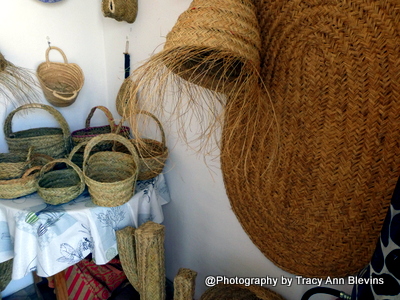
Rojales Windmill: The Windmill is one of the most interesting constructions of the pre-industrial architecture of Rojales. It is located on one of the elevated hills of Ladrillar Park to take advantage of the wind. The mill, built in the 18th century, was restored in 1998.
The renovated structure stands tall, surpassing a height of 10 meters, inclusive of both the tower cylinder and its hood. Internally, the building comprises three distinct sections:
The ground floor, known as the silo, once functioned as a storage area and now houses a kitchen. It also features the initial steps of a staircase that spirals within the circular structure, leading to higher levels.
The first floor, referred to as the chamber, houses equipment such as the flour cleaner and sieve.
Lastly, the second floor accommodates the wheat cleaning area before grinding, along with the remainder of the machinery.
All about Rojales
The Huerta Museum: The Huerta Museum is an eco-museum complex that is located in the center of the old Hacienda de Llanos , a large agricultural holding also known as Hacienda de D. Florencio.
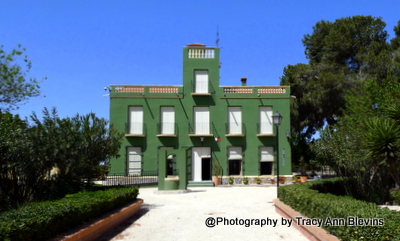
With more than 30,000 m2 of land this working museum explains the reality of traditional work in the countryside based on the original property of the hacienda and the utensils that have been donated by the residents of the municipality, including traditional transport vehicles, household goods, horse equipment. , the cereal cycle and much more.
Located - Ctra. CV-920 (Rojales-Guardamar), Km. 18.5 - GPS : 38°06'14.4"N 0°42'59.8"W - 38.104009, -0.716600
Open - Monday to Friday 09:00 to 15:00
Whilst you are in this area, there are also three wonderful parks to visit - Rojales - El Recorral Park Situated on the outskirts of Ciudad Quesada, there is plenty of parking at C. Lugar Sector, 297, 275, 03170 Cdad. Quesada
Guardamar del Segura - Parque Reina Sofia, Avenida dels Pins 03140 Guardamar del Segura.
Torrevieja, La Mata - Parque del Molino del Agua (The Water Mill Park) - If coming by car the best place to leave your vehicle is just outside the park on Calle Morera, 1 Torrevieja.
Enjoy your time in Rojales and if you have found any other exciting places to visit comment below.

Cullera is a coastal town located in the Ribera Baja region in the province of Valencia, Spain. It's situated about 40 kilometres south of the city of Valencia, and 100km North of Benidorm making it easily accessible for day trips.
Cullera is situated on the banks of the Júcar River, which irrigates the entire municipality through a historic irrigation system that dates back to the times of Muslim rule.
Cullera is known for its beautiful beaches, historical sites, and natural landscapes, making it a popular tourist destination. The historical parts of the city are to the south whilst the tourist district points to the sea in the east.

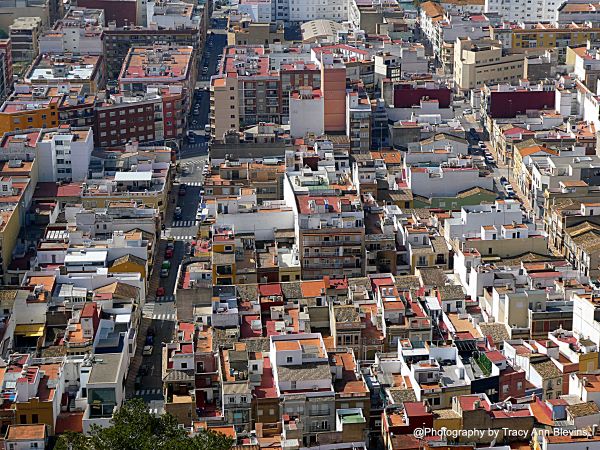
Here are some key attractions of Cullera:
Castle of Cullera (Castillo de Cullera): Situated atop one of the hills of Muntanya les Raboses, also known as Cullera Mountain, the Cullera Castle commands a height of approximately 100 meters. Offering an unparalleled vantage point, the castle affords visitors a breath-taking panorama of the Júcar river mouth and the entire Cullera coastline. On clear days, the silhouette of Montgó mountain in the province of Alicante can be discerned to the South.
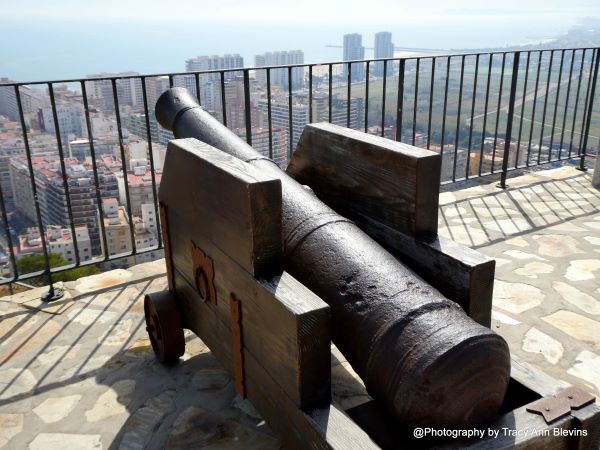
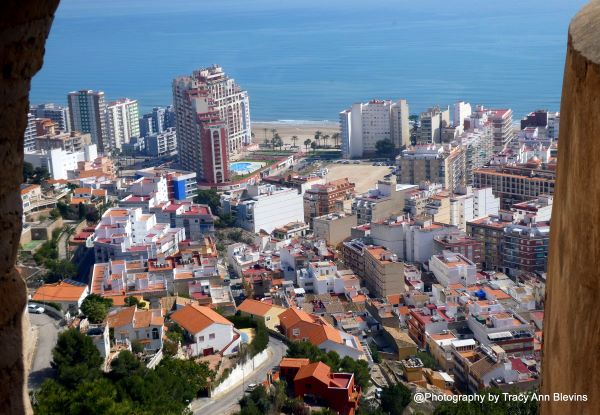
Originally constructed by the Córdoba state in the 9th century, the fortress served as a strategic stronghold for controlling natural resources, communication routes, and borders. Comprising the citadel and two albacaras (fortified enclosures), it provided shelter for troops, cavalry, livestock, and the local population during times of siege.
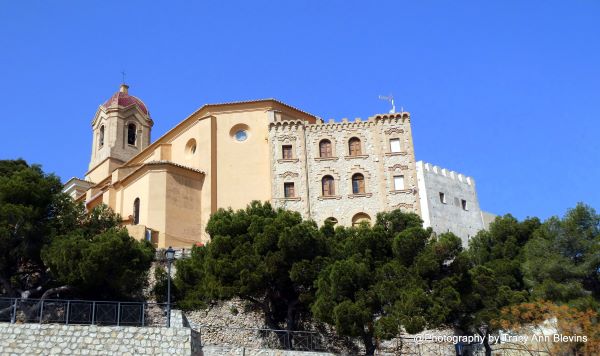
A network of towers, including the Torre de la Reina Mora or Santa Ana, Torre Miranda, Torre del Racó de San Antonio, Torre Desmochada, and Torre Octagonal, once linked the sections of walls encircling the Castle. Today, visitors can explore this walled complex, beginning their journey from the Torre de la Reina Mora or Santa Ana and following a path tracing the ancient perimeter.
Over the centuries, Cullera Castle has undergone numerous renovations, reconstructions, and reforms, bearing witness to significant historical events from the Middle Ages to the Carlist Wars. Designated as an Asset of Cultural Interest, it ranks among the most visited monuments following its restoration and enhancement.
Cullera, province of Valencia
During summer nights, the castle comes alive with a diverse array of activities, including theatre performances, magic shows, classical music concerts, exhibitions, and escape rooms. Traditional Valencian dance and music performances further enrich the cultural offerings at this historic site.
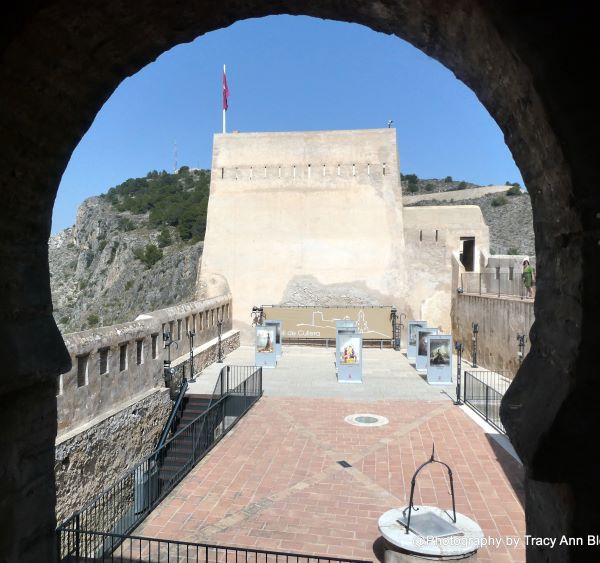
Inside the castle, visitors can delve into the rich history of Cullera and the fortress itself at the Municipal Museum of History and Archeology, which forms part of the Cullera Museum Network. Additionally, exhibitions and audio-visual presentations offer insights into the castle's storied past.
Adjacent to the fortress stands the Sanctuary of the Virgin of the Castle, home to religious artworks of immense value, including those dedicated to the Patroness of Cullera, the Virgin of the Incarnation.
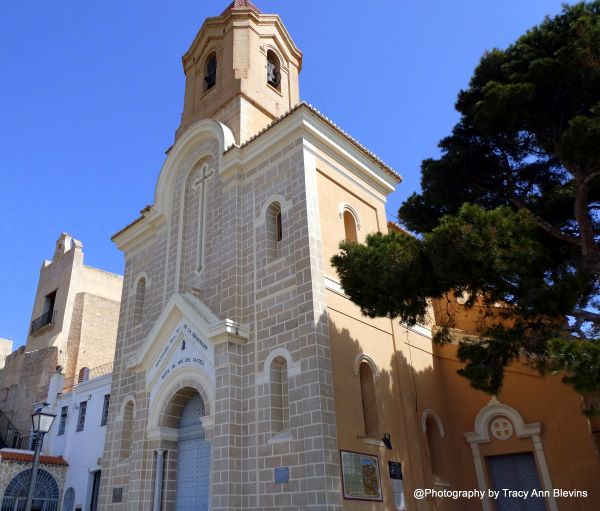
Open from 10:00 to 17:00
Admission Fee 3€
Note: some areas of the castle can be quite steep and uneven, so wear comfortable shoes with good grip.
Santa Marta Chapel: The Santa Marta Chapel. Dating back to the 14th century, is situated in a picturesque natural setting offering breath-taking views of the surrounding area. While only remnants of the original structure remain today, the journey to the chapel is well worth it for the stunning vistas of the sea and mountains along the pathway. It presents an excellent opportunity for a brief hiking excursion, allowing visitors to appreciate both the historical significance of the chapel and the natural beauty of the landscape.
Lighthouse (Faro de Cullera): The Cullera Lighthouse is another iconic landmark in the town. While the lighthouse itself isn't accessible to visitors due to security reasons, it still offers breathtaking views of spectacular sunrises and sunsets, making it a perfect spot for photography enthusiasts. Additionally, the area surrounding the lighthouse is ideal for leisurely strolls and hiking adventures, providing an opportunity to immerse oneself in the scenic beauty of the coastline.
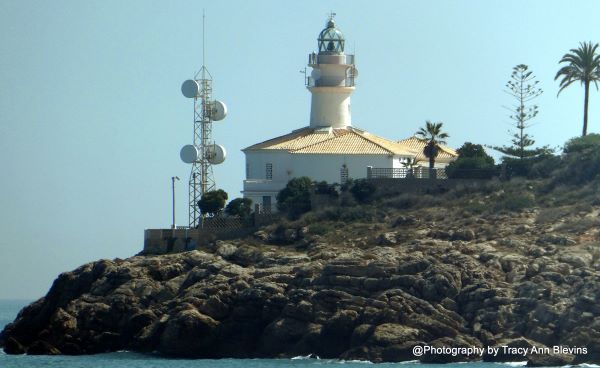
Cullera Market Gardens: The Municipal Market of Cullera, nestled in Plaza de la Virgen, the Municipal Market of Cullera showcases striking modernist architecture with a touch of Valencian ecclesiastical flair. Serving as the bustling hub of the area, it's a charming destination where visitors can procure fresh food items while marvelling at its architectural beauty. Additionally, the market hosts cultural events in its Auditorium and Multipurpose Hall, adding to its allure as a vibrant community centre.
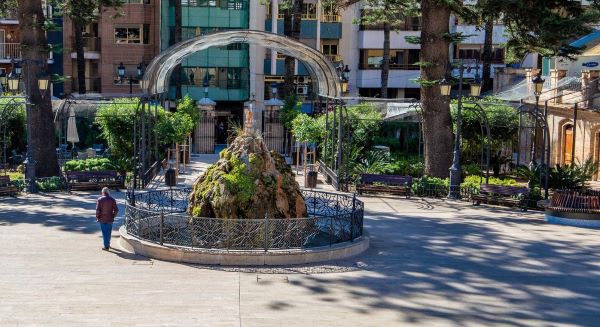
The Mercado Gardens also hold a hidden piece of history beneath its surface - the Civil War Air Raid Shelter. Constructed during the Spanish Civil War in response to the frequent bombings threatening Cullera and its residents, this shelter comprises two galleries situated beneath the rear naves of the Municipal Market, which now house the Auditorium and the Multipurpose Room.
These galleries represent one of the best-preserved examples of Civil War shelters in the entire Valencian Community, offering a glimpse into the past and the challenges faced by those living through the conflict.
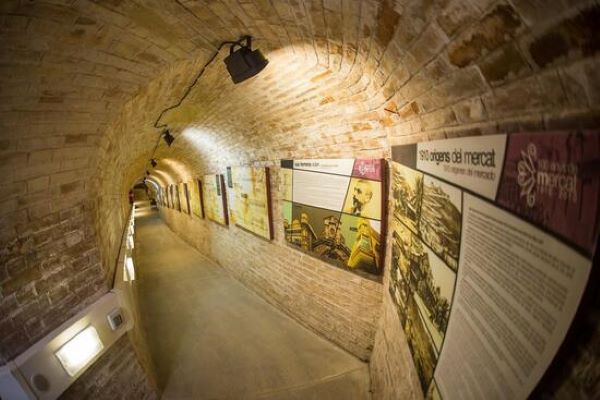
The Museum – Refugio de Cullera offers guided tours, providing visitors with a deeper understanding of the shelter's historical significance and the context of the Civil War.
To access the shelters, visitors can find the entrance adjacent to each of the rear naves of the market gardens, specifically located next to the Municipal Auditorium and next to the Multipurpose Hall. The address is Plaza de la Virgen, s/n.
The Cullera Rice Museum: Housed within the renovated Hermitage of the Saints of the Stone, San Abdón, and San Senén, revered patron saints of crop protection. Situated atop a hill overlooking expansive rice fields and the Albufera Natural Park, this historic building, originally erected in the 13th century and later expanded in the 17th century, offers a unique setting to explore the heritage of rice cultivation in the region.
The original structure, characterized by an elongated design with a pitched roof and cobblestone flooring, was later supplemented by a modern hermitage. Over time, these two buildings were integrated, with the older section serving as the hermit's dwelling.
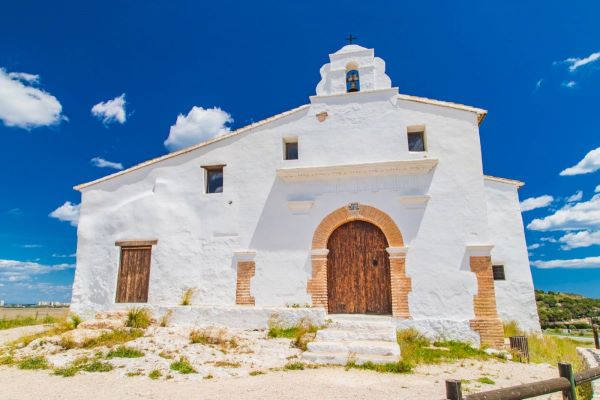
Within the museum, visitors can delve into the origins and traditional processes of rice cultivation, deeply intertwined with the Valencian landscape. The museum space, housed within the hermit's abode, showcases a range of exhibits including old photographs, documents, and an ethnological collection of tools and attire related to the historic practices of rice farming. These artifacts offer a captivating glimpse into the bygone era of rice cultivation and its significance in the region's cultural heritage.
The permanent exhibition within the Cullera Rice Museum provides insight into the cultivation and production of rice, highlighting its profound influence on local gastronomy. Through interactive displays and informative exhibits, visitors can gain a deeper appreciation for the rich history and enduring legacy of rice cultivation in Cullera and beyond.
Cullera, province of Valencia
Ctra. Nazaret – Oliva (ctra. del Saler). Next to the Aquópolis water park.
The Dragut Cave, also known as the Pirate Museum of Cullera: Commemorates the infamous raid on Cullera by the Turkish pirate Dragut in 1550, a significant event during the era of rampant piracy in the 16th century. Dragut, a lieutenant of the notorious Barbarossa, led a surprise attack on the city, catching its inhabitants off guard and seizing valuable goods and hostages.
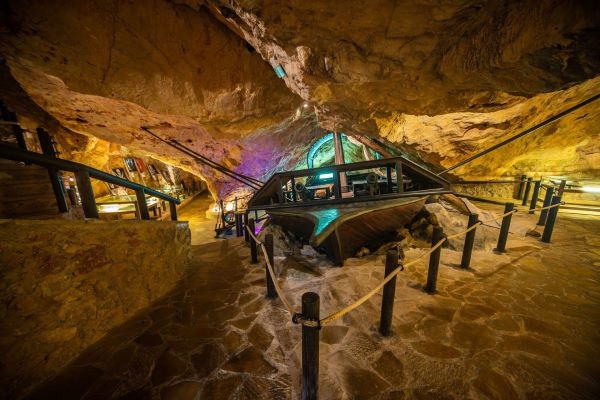
Legend has it that within the confines of this cave, located in the district of Faro de Cullera on the captivating Island of Thoughts at Cape Cullera, Dragut conducted negotiations for ransom in exchange for the release of hostages, effectively depopulating the area due to continuous threats.
Today, the Dragut Cave stands as the sole pirate cave-museum in Spain, offering a unique glimpse into the perilous life of Mediterranean pirates during the 16th century. Visitors are greeted by a diorama depicting Cullera in 1550, setting the stage for an immersive journey through the history of piracy, religious conflicts, the Inquisition, and advancements in navigation systems of the time.
The museum houses a remarkable collection of artifacts including old nautical instruments, artillery pieces, historical maps, clothing, and coins. Notably, visitors can explore a reproduction of a brig, a swift and formidable corsair galley used for raiding.
Guided tours featuring audiovisual presentations provide insight into the turbulent era of piracy, captivating both children and adults alike. Additionally, visitors can enjoy the scenic surroundings of Cape Cullera, perched on the cliffs overlooking the Mediterranean Sea.
Open from 11:00 am to 3:00 pm and from 4:00 pm to 8:30 pm. Admission prices are €5 for adults and €3 for children aged 4 to 14 years old. Optional tourist train rides are available from June to September, enhancing the overall experience of exploring this unique historical site located on Plaza Dr. Fleming, s/n (Cullera Lighthouse).
Natural Park of Cullera: This protected natural area encompasses diverse ecosystems, including wetlands, dunes, and forests. It's an excellent spot for hiking, birdwatching, and enjoying the region's biodiversity.
l'Estany lagoon: Nestled in the southern part of the municipal area, with its mouth opening into the sea. A peaceful and quiet place where you can relax in the middle of nature, walk along the shores of the lake, go hiking or enjoy a bike ride, the lagoon is also a popular fishing spot.
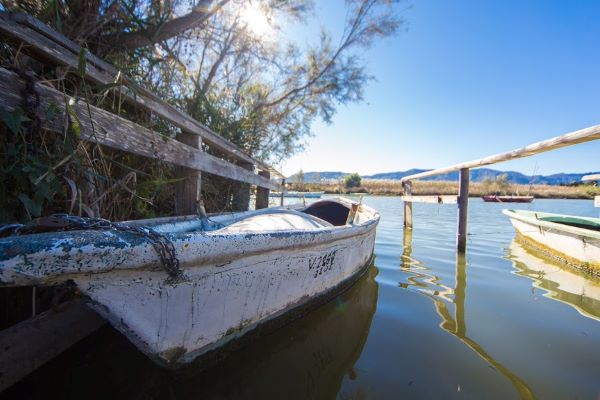
Head towards the south of the municipality along the Nazaret – Oliva highway, towards Brosquil – Tavernes de la Valldigna CV605, until the “Entrada de l' Estudiantent”.
Also from Avda. Marenyet. Passing by the Torre del Mareny. Next along Av del Estany to the lake.
Cullera, province of Valencia Aquopolis Water Park, Cullera: Water attractions for all tastes, nestled seamlessly into the surrounding mountains, the park boasts a picturesque natural setting, enhancing the overall experience for visitors.
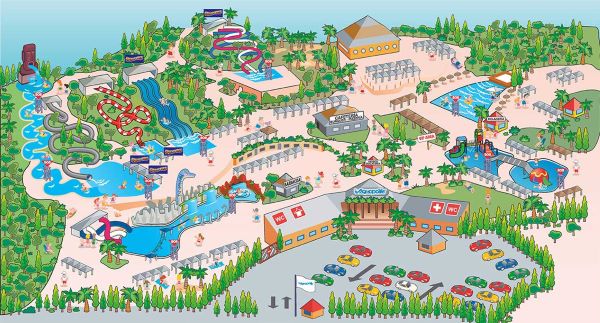
Aquopolis opened in 1985 on the outskirts of Cullera, the water park stands as a landmark attraction in the region and holds the distinction of being one of the earliest of its kind established in the country. Designed primarily for families with children and teenagers in mind, it offers a total of 11 attractions, ranging from thrilling slides to inviting pools. The most daring will enjoy attractions like Black Hole or Calypso and those who need a little relaxation can relax in the Wave Pool or the Amazon River.
Open from late June to early September, located on Carretera de Nazaret-Oliva km 33.
Dining out: Cullera is renowned for its delicious seafood dishes, particularly paella, which is a traditional Valencian rice dish. Visitors can sample fresh seafood and other regional specialties at the town's numerous restaurants and tapas bars.
Festivals and events: Throughout the year, Cullera hosts various cultural and recreational events, including music festivals, traditional fiestas, and religious celebrations. One of the most famous events is the annual Moors and Christians festival, which commemorates the town's historical battles against piracy.
Cullera, province of Valencia Water sports: With its prime location on the coast, Cullera offers ample opportunities for water sports enthusiasts. Activities such as windsurfing, sailing, jet skiing, and kayaking are popular among locals and tourists alike.
BEACHES: Cullera has a total of 11 beaches ranging from family-friendly beaches with full amenities, quiet coves that are perfect for snorkelling, as well as beaches offering water sports and even a naturist beach.
Raco Beach (Platja del Racó): Located at the northernmost part of Cullera, Raco Beach is a wide sandy beach with calm waters, making it perfect for families with children. It offers full amenities including lifeguard services, showers, and beach bars.
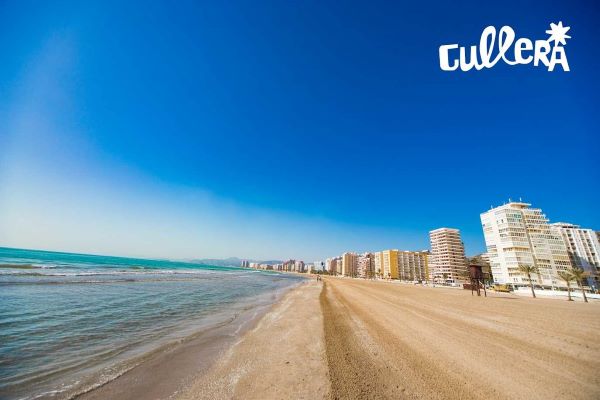
Sant Antoni Beach (Platja de Sant Antoni): Just south of Raco Beach, Sant Antoni Beach is another family-friendly beach known for its fine golden sand and shallow waters. It's equipped with facilities such as showers, beach bars, and sunbed rentals.
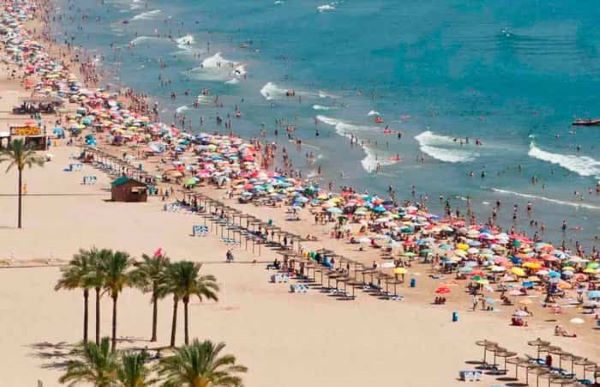
Los Olivos Beach (Platja dels Olivos): This beach is characterized by its tranquil atmosphere and natural surroundings. It's less crowded compared to other beaches in Cullera, making it ideal for those seeking peace and relaxation. Snorkelling enthusiasts will also enjoy exploring the underwater life here.
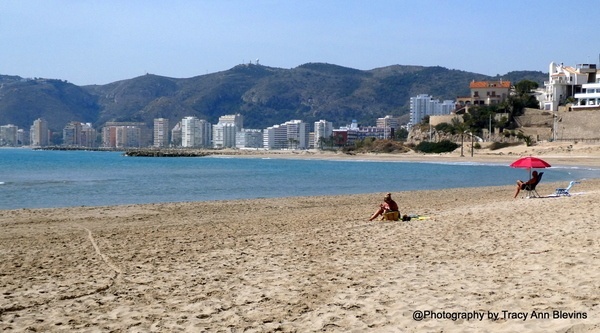
El Faro Beach (Platja del Faro): El Faro Beach is situated near the Cullera Lighthouse and offers beautiful views of the coastline. It's a relatively quiet beach with calm waters, suitable for swimming and sunbathing.
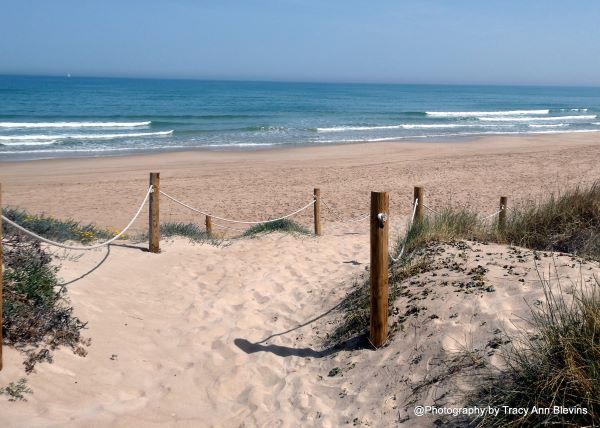
Cap Blanc Beach (Platja de Cap Blanc): Known for its rugged cliffs and clear waters, Cap Blanc Beach is popular among nature lovers and snorkelers. It's surrounded by cliffs, providing a picturesque backdrop for beachgoers.
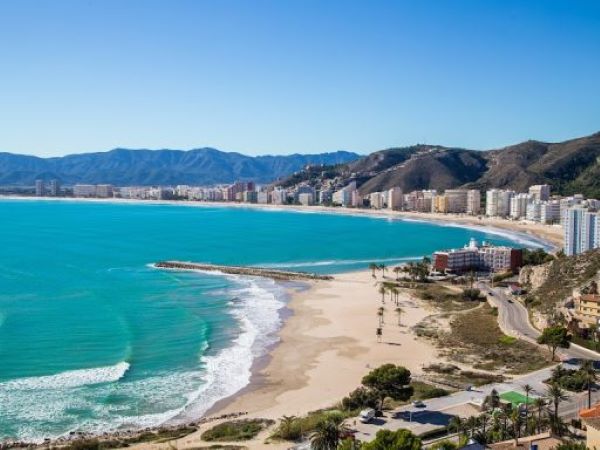
Marenyet Beach (Platja del Marenyet): Marenyet Beach is a wide sandy beach with moderate waves, making it suitable for water sports such as windsurfing and kiteboarding. It's equipped with facilities including showers, beach bars, and rental services.
San Antonio Beach (Platja de Sant Antoni): Not to be confused with Sant Antoni Beach mentioned earlier, San Antonio Beach is known for its vibrant atmosphere and lively beach bars. It's a popular spot for young crowds and offers various water sports activities.
Brothers Beach (Platja dels Germans): Brothers Beach is a secluded cove surrounded by cliffs, offering a peaceful environment for visitors. It's a great spot for snorkelling and enjoying the natural beauty of the coastline.
Cullera, province of Valencia
Racó del Mar Beach (Platja del Racó del Mar): This beach is characterized by its pristine waters and soft golden sand. It's relatively quiet compared to other beaches in Cullera, making it perfect for those seeking tranquility.
El Dosel Beach (Platja del Dosel): El Dosel Beach is known for its wide stretch of sand and calm waters, making it suitable for families with children. It's equipped with amenities such as showers, beach bars, and sunbed rentals. In Cullera, the naturist beach is Playa del Dosel. This beach is known for its tolerant attitude towards nudity, and it's where naturists often gather. It's located towards the southern end of Cullera's coastline. While it's not officially designated as a naturist beach, it's commonly acknowledged as such by locals and visitors alike.
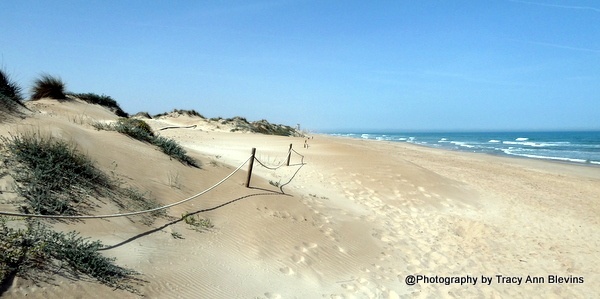
Escollera Beach (Platja de l'Escollera): Located at the southernmost tip of Cullera, Escollera Beach is a small secluded cove surrounded by rocks. It's a peaceful spot for swimming and sunbathing away from the crowds.
Overall, Cullera is a charming coastal destination that offers a perfect blend of natural beauty, cultural heritage, and recreational activities, making it an ideal choice for travellers seeking a memorable experience in the Valencia region.

Gardens to visit - Costa Blanca. The Costa Blanca is known for its beautiful beaches and coastal landscapes and while it might not be as famous for gardens as some other regions, there are still a few beautiful gardens that are well worth a visit:
Jardín Huerto del Cura, National Artistic Garden - 49 Porta de la Morera Street, Elx/Elche
The Huerto del Cura Garden, tucked away in the heart of Elche city centre, was declared a National Artistic Garden in 1943 and encompasses a vast area of 12,000 square meters.
Also known as The Priest's Garden, this is one of the most famous gardens in the area, known for its impressive palm collection, including the Imperial Palm. This magnificent palm tree is almost 200 years old, and is a natural rarity that consists of a parent trunk from which a series of symmetrical trunks emerge in the form of a chandelier
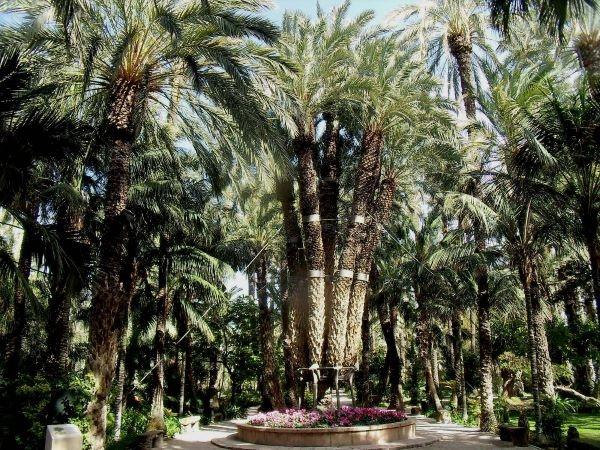
The other highlights of this peaceful garden include a variety of tropical plants, birds, peacocks, ponds, and water features. Your visit then continues in the small garden museum where you can discover all the history and charm of Elche's secret haven.
Visitors can delight in the impressive collections of palms and cacti sourced from diverse corners of the globe, showcasing numerous species acclimatized to the local weather. Alongside the palm trees, the Huerto del Cura hosts other quintessential crops of the Spanish Mediterranean, including lemon trees, orange trees, pomegranates, carob trees, and jujube trees. Additionally, the garden boasts subtropical specimens, forming an enchanting compilation of flora from the most exotic locales.
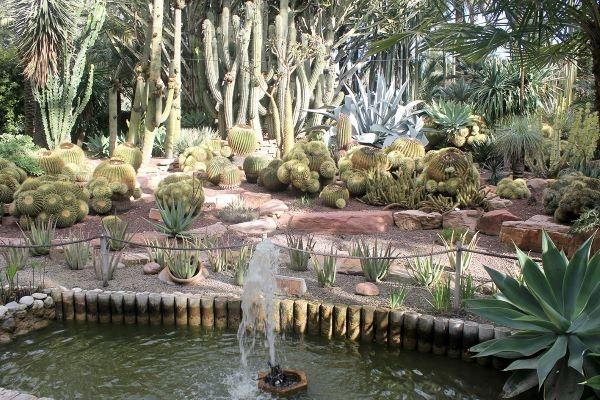
Entrance prices - Adults 6.50€, Senior 65+ 4.50€, Students 4.50€, Children 5 - 15 3.50€, Disabled 3.50€, Disabled 3.50€
Opening hours:

Spanish Road Trip 2023, day 9 - Granada to Benidorm, Via Lorca 394km
After a enjoyable stay in Granada for a couple of nights, it's time to make our way back to Benidorm, aiming to reach home at a reasonable hour, we opted for the fastest route. However, we could not resist a brief detour to Lorca Castle. Last year, our attempt to locate it was unsuccessful, but this time around, we were determined not to be defeated.
Lorca, situated in the province of Murcia, gained international attention for its recent earthquakes which occurred on May 11th, 2011 where two earthquakes shook Lorca, leaving nine dead and about three hundred injured. The earthquake had a profound impact on the town.
The history of Lorca dates back to ancient times, and the area has been inhabited by various civilizations, including the Romans, Visigoths, and Moors. The town has a rich cultural and architectural heritage with historical landmarks that reflect its diverse past.
Spanish Road Trip 2023 Castillo de Lorca
Towering above the city of Lorca, is Lorca Castle (Castillo de Lorca), also known as Fortress of the Sun. This hilltop fortress was built between the 9th and 15th centuries and is one of the largest castles in Spain, with 52,000 square meters available within the walls.
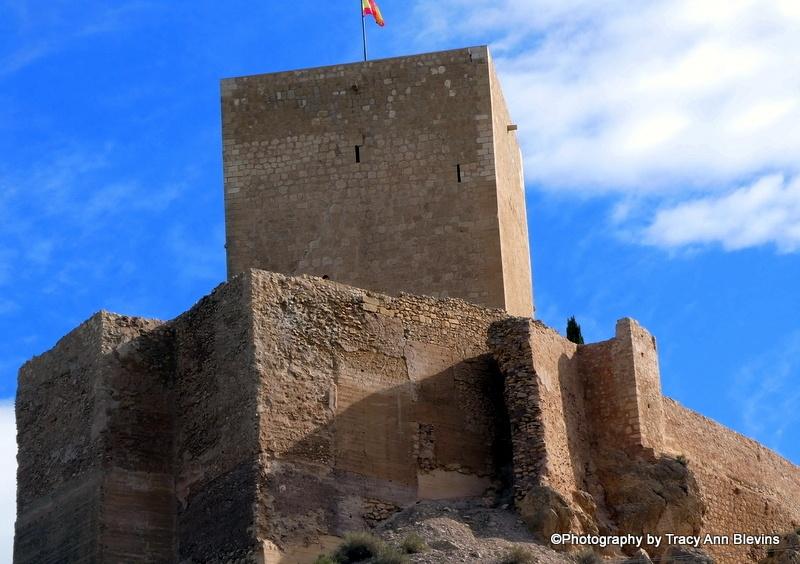
The castle has been restored as a themed area dedicated to visitors, there’s a small car park just outside the castle walls. or a much larger carpark on the main road at the base of the castle.
If you wish to visit the towers there are timed slots and the entry fee to some of them was 4.50€ each, not having much time we just wanted to generally explore and entry to the grounds was FREE, which was a nice surprise.
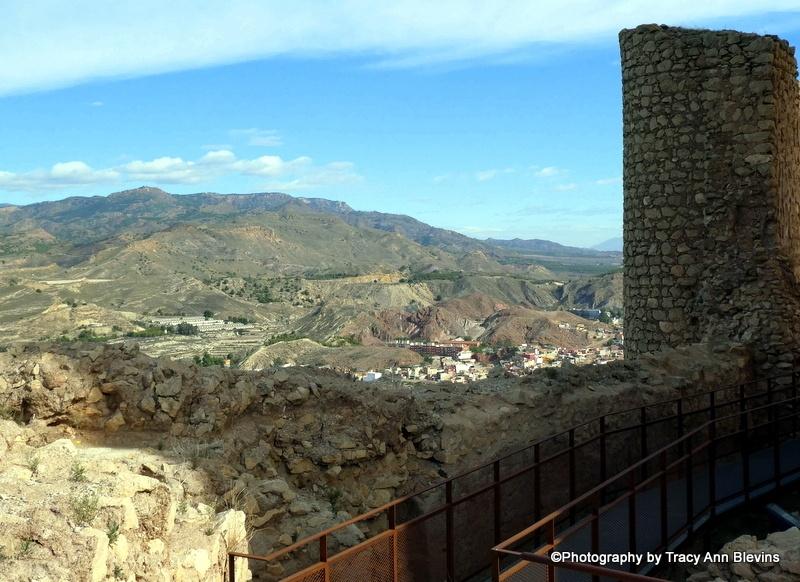
One of the most photographed spots is the massive sundial situated close to Fortaleza del Sol and Torre del Espolón.
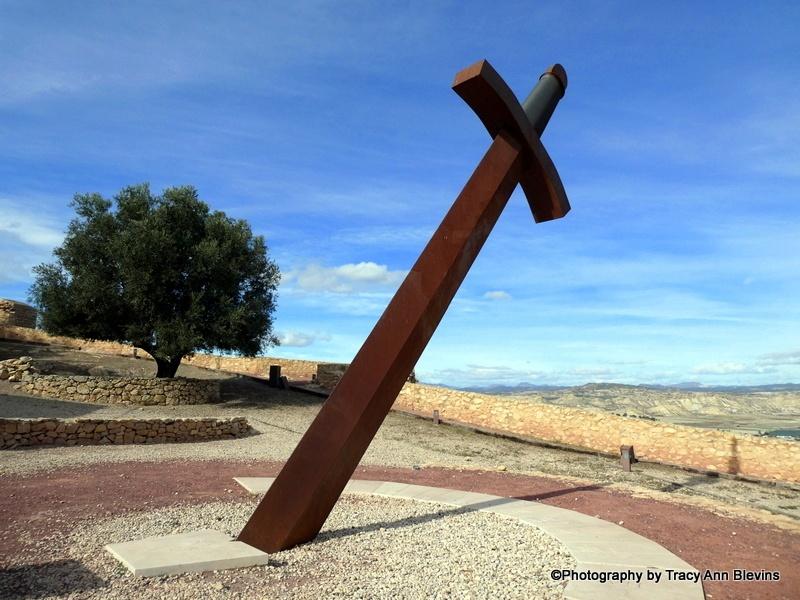
Lorca Castle has several towers that contribute to its architectural and defensive features, some of which are open to the public at certain times of the day, but these do have an entry fee.
Alfonsina Tower: Also known as the Torre de Espolón, it was built in the 13th century during the reign of Alfonso X of Castile. This tower is one of the key elements of Lorca Castle and has historical significance.
Spanish Road Trip 2023
Espolón Tower: This tower is strategically positioned to defend one of the main entrances to the castle. It is part of the defensive system that protected the castle from potential invaders.
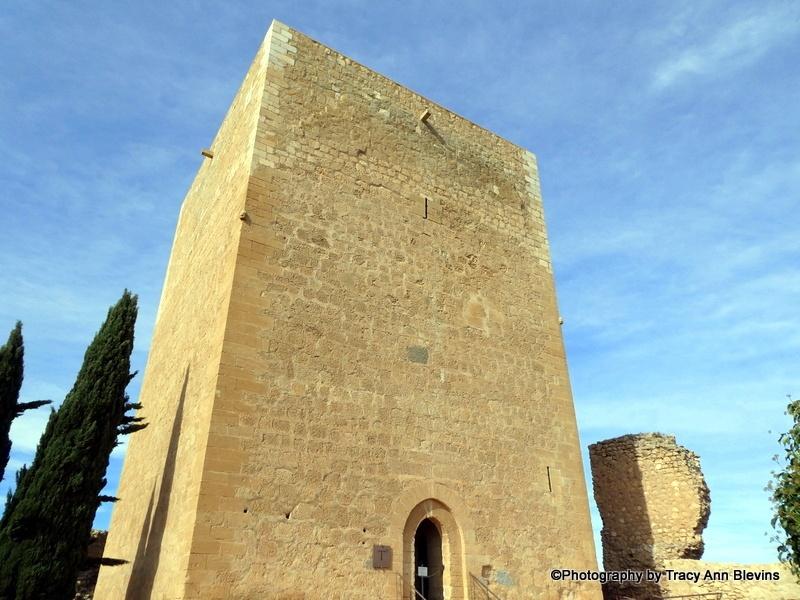
Keep Tower: also known as the Torre del Homenaje, served as the main tower of the castle and was often the residence of the castle's lord. It was a symbol of authority and played a crucial role in the defence of the fortress.
Alambique Tower: This tower is part of the complex and contributed to the overall defence system of Lorca Castle. The castle's towers were interconnected, creating a formidable defence against potential threats.
Prison Tower: As the name suggests, this tower may have been used as a prison or a place for confinement within the castle. It reflects the multifunctional nature of medieval castles, serving both defensive and administrative purposes.
This is a really lovely castle and we enjoyed our time here, its certainly a good place to visit if you are in this area.
A bit of the Castles history:
The castle comprises of a network of defensive structures, and played a pivotal role during the Middle Ages, solidifying its position as an impregnable stronghold in the Southeastern part of the Iberian Peninsula. Throughout the Reconquista, Christians and Muslims fiercely contested Lorca Castle, marking it as a key strategic point.
Archaeological excavations have unveiled evidence of continuous human habitation at the castle site since Neolithic times.
The earliest written record of Lorca Castle is of Muslim origin from the 9th century, indicating the significance of the city of Lurqa in the region ruled by Theudimer (Tudmir). Under Muslim rule, the castle boasted impenetrable defenses, with the Espaldón Wall dividing its interior into two sections. The western part served as a refuge for livestock and grain during times of peril, while the eastern part housed a neighbourhood known as the barrio de Alcalá.
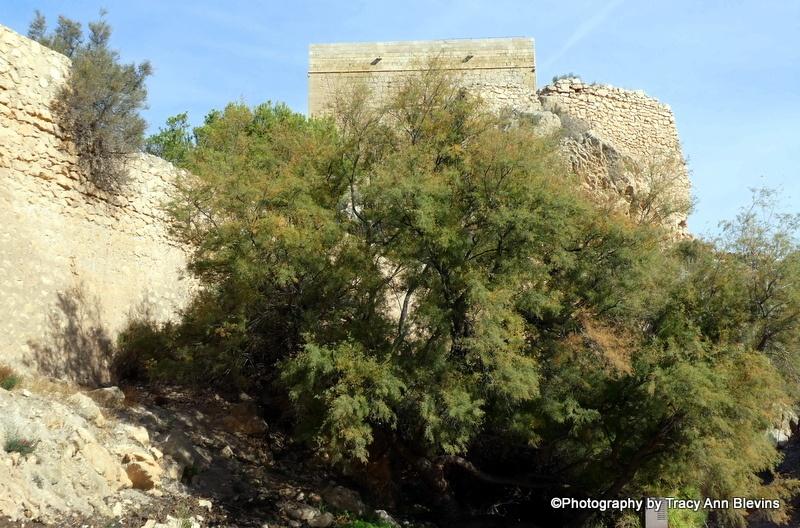
After the Reconquista in 1244, when Lorca was conquered by Castilian Infante Don Alfonso (future Alfonso X), the fortress became a crucial defensive outpost against the Kingdom of Granada. Over the next 250 years, Lorca Castle stood as a vigilant watchpoint on the border between the Christian kingdom of Murcia and the Muslim state of Granada.
Alfonso X initiated the construction of towers, such as the Alfonsina and Espolón Towers, reinforcing and modifying the walls. This reconstruction resulted in the almost complete eradication of the Muslim fortress, leaving only remnants like the foundation stones and the wall known as the muro del Espaldón.
Within the alcazaba, the Moorish fortification, lay the Jewish Quarter, physically separated from the rest of the city by walls. This separation, intended to safeguard the Jewish population, unintentionally fostered a division between Christians and Jews, with Christians residing in the lower part of town. The Jewish Quarter covered an area of 5,700 square meters, featuring 12 homes and a synagogue from the 14th century, the only one found in Murcia. The irregular layout of the streets adapted to the landscape, divided into four terraces, with the synagogue at the centre and homes surrounding it.
Lorca Castle lost its strategic importance after the conquest of Granada in 1492. The expulsion of Jews by Ferdinand and Isabella led to the castle's depopulation.
By the 18th century, the castle had become almost ruins. In the 19th century, refurbishments were carried out during the War of Spanish Independence, altering its medieval appearance, including the installation of cannons. In 1931, Lorca Castle received recognition as a National Historic Monument.
Today, the castle also hosts a luxury hotel, The Parador, where guests can soak up the history and enjoy stunning views.
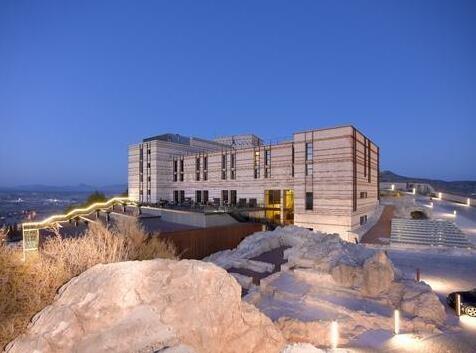
Find more photos here
Spanish Road Trip 2023
Total cost of 8 nights' accommodation - 300€ (average coast per night = 43€ 7 nights as we stayed with a friend one night)
Additional car parking expenses - Nil, everywhere we stayed offered FREE on street, or private parking.
Total Diesel cost - in the region of 150€
Best value for money accommodation - Tarifa 94€ for 2 nights and Granada 80€ for two nights.
Worst accommodation - Lo Pagan, our first night.
Favourite place visited - Tarifa, day 5, we really fell in love with this whole area.
Most disappointing - Mojaca, day 2 - This town was completely soul less this time of year.
Best surprise along the way - Setinel de las Bodega, day 6, certainly a place to visit during the warmer months.
What we found different this year - Every other road trip we have taken has been during the summer months, what did we find were the pros and cons of a Road Trip in November:
Pros - Accommodation was easier to find and most with free parking.
Accommodation was much cheaper, we got some really, really good deals.
Less Traffic on the roads.
Easier to park in the towns and cities.
Much more comfortable walking around in the cooler daytime temperatures.
Cons:
Not enough daylight hours to do the amount of sightseeing we normally do.
Cold at night.
Some towns/Cities were so quiet they had no atmosphere.
Would we do a road trip again this time of year? No, the lack of daylight hours was a real problem, with us arriving at a lot of our destinations in darkness. As we are now finding the heat too much during the peek summer months the next trip will be taken during May, September or October. Watch this space.
Accommodation -
If you have any suggestions for next years road trip please comment below as we are always looking for new places to visit.




